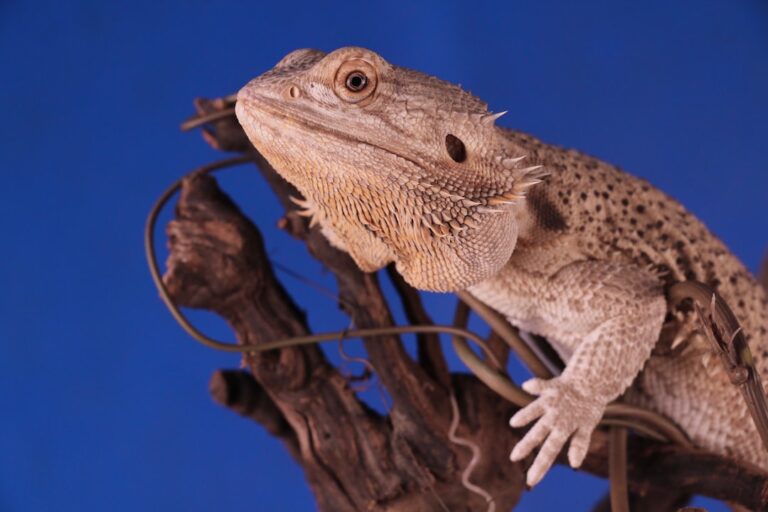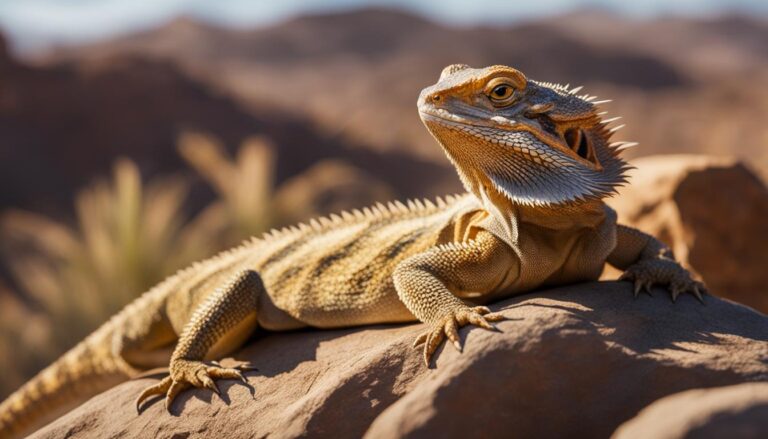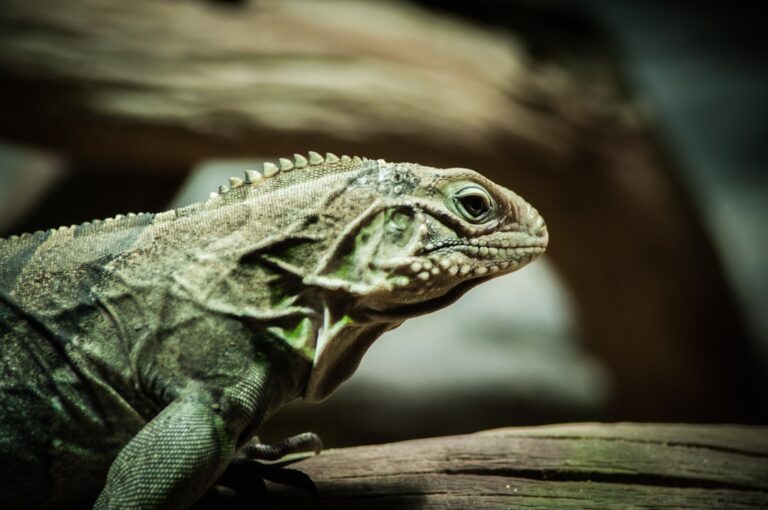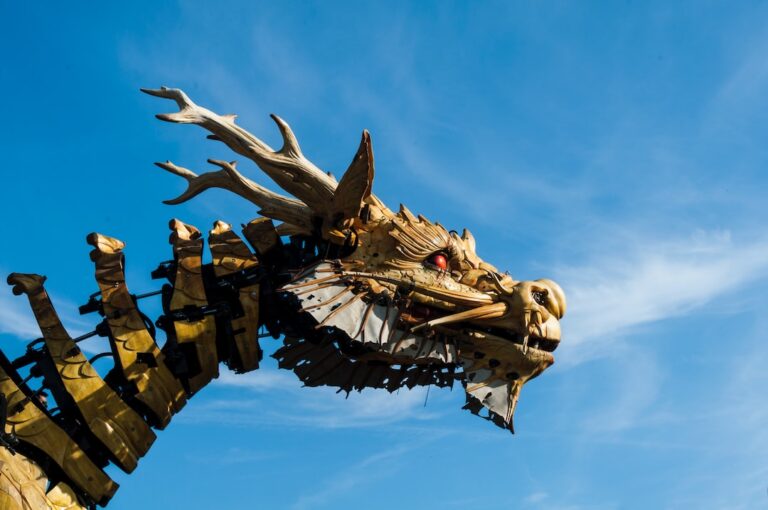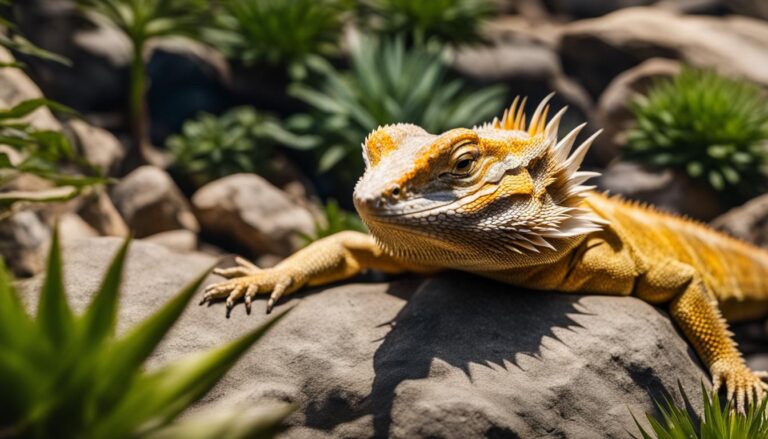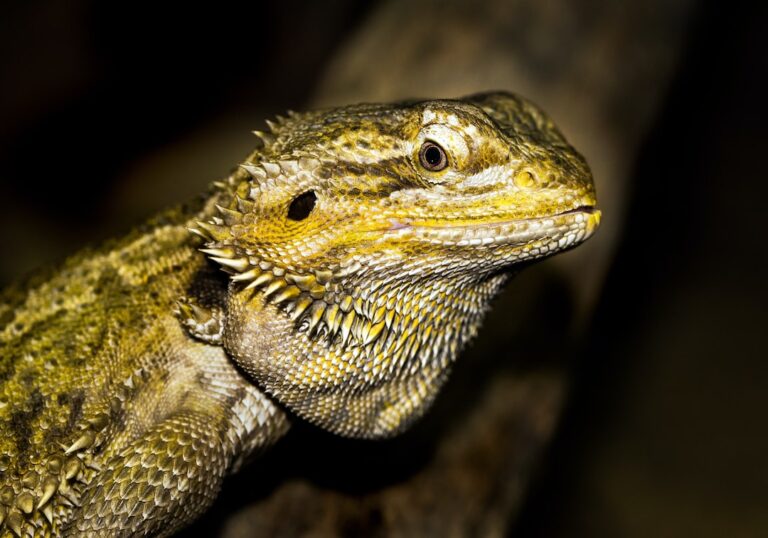Why Is Your Bearded Dragon Dragging Its Back Legs?
Bearded dragons, also known as Pogona vitticeps, are popular reptile pets known for their unique appearance and docile nature. These reptiles are native to the arid regions of Australia and have become increasingly popular as pets due to their calm temperament and relatively low maintenance requirements. Bearded dragons are characterized by their spiky appearance, which is caused by rows of spines along their throat and sides. They also have a distinctive beard-like flap of skin under their chin that they can puff out when they feel threatened or excited.
In terms of behavior, bearded dragons are generally quite docile and easy to handle. They are known for their curious nature and can often be seen exploring their surroundings or basking in the sun. Bearded dragons are diurnal, meaning they are most active during the day and sleep at night. They are also omnivorous, meaning they eat both plant matter and small insects. This varied diet is important for their overall health and well-being.
Table of Contents
Understanding the Anatomy of Bearded Dragons
To understand why bearded dragons may experience leg dragging, it is important to have a basic understanding of their anatomy. Bearded dragons have a skeletal system that is similar to other reptiles, consisting of bones that provide support and protection for their internal organs. Their muscular system allows them to move and perform various activities such as climbing, digging, and running.
Proper nutrition is crucial for maintaining the health of a bearded dragon’s bones. Calcium is an essential mineral that helps build strong bones and teeth. Without adequate calcium intake, bearded dragons can develop weak bones that are prone to fractures. It is important to provide a balanced diet that includes calcium-rich foods such as leafy greens, calcium supplements, and gut-loaded insects.
Common Reasons for Bearded Dragons Dragging Their Back Legs
Leg dragging in bearded dragons can be a cause for concern and may indicate an underlying health issue. There are several common causes for this behavior, including metabolic bone disease, impaction, parasites and infections, and neurological disorders.
Metabolic Bone Disease: A Common Cause of Leg Dragging in Bearded Dragons
Metabolic bone disease (MBD) is a common condition that affects reptiles, including bearded dragons. It is caused by a lack of calcium and/or vitamin D3 in their diet, which leads to a deficiency in these essential nutrients. Without adequate calcium and vitamin D3, bearded dragons cannot properly absorb and utilize the calcium they consume, resulting in weak bones and other skeletal abnormalities.
Symptoms of MBD in bearded dragons include leg dragging, soft or deformed bones, swollen joints, tremors or seizures, and difficulty walking or climbing. If left untreated, MBD can lead to serious health complications and even death.
Treatment for MBD involves addressing the underlying nutritional deficiencies and providing proper supplementation. This may include adjusting the diet to include more calcium-rich foods, providing UVB lighting to promote vitamin D3 synthesis, and administering calcium and vitamin D3 supplements as recommended by a veterinarian.
Impaction: Another Reason for Bearded Dragons Dragging Their Back Legs
Impaction occurs when a bearded dragon ingests something that cannot be properly digested or passed through their digestive system. This can lead to a blockage in their intestines or cloaca, causing discomfort and difficulty in defecating.
Common causes of impaction in bearded dragons include ingesting substrate material such as sand or gravel, consuming foreign objects such as rocks or plastic, or eating large prey items that are difficult to digest.
Symptoms of impaction may include leg dragging, loss of appetite, bloating or distended abdomen, constipation or diarrhea, and lethargy. If left untreated, impaction can lead to serious health complications and even death.
Treatment for impaction involves addressing the underlying cause and providing supportive care. This may include adjusting the diet to include more easily digestible foods, providing proper hydration, and administering laxatives or enemas as recommended by a veterinarian.
Parasites and Infections: A Possible Cause of Leg Dragging in Bearded Dragons
Bearded dragons are susceptible to various parasites and infections that can affect their overall health and mobility. Common parasites in bearded dragons include internal parasites such as worms and protozoa, as well as external parasites such as mites and ticks. Infections can also occur, including respiratory infections and skin infections.
Symptoms of parasitic or infectious diseases in bearded dragons may include leg dragging, loss of appetite, weight loss, lethargy, abnormal feces, respiratory symptoms such as wheezing or coughing, and skin lesions or abnormalities.
Treatment for parasitic or infectious diseases involves identifying the specific parasite or pathogen through diagnostic testing and administering appropriate medications or treatments. It is important to consult with a veterinarian experienced in reptile care for proper diagnosis and treatment.
Neurological Disorders: A Rare but Serious Cause of Leg Dragging in Bearded Dragons
While rare, neurological disorders can occur in bearded dragons and may result in leg dragging or other mobility issues. These disorders can be caused by various factors, including genetic predisposition, trauma, infection, or metabolic imbalances.
Symptoms of neurological disorders in bearded dragons may include leg dragging, tremors or seizures, abnormal movements or posture, difficulty coordinating movements, and changes in behavior or appetite.
Treatment for neurological disorders depends on the underlying cause and may involve supportive care, medication to manage symptoms, and addressing any underlying health issues. It is important to consult with a veterinarian experienced in reptile care for proper diagnosis and treatment.
Signs and Symptoms of Leg Dragging in Bearded Dragons
Leg dragging in bearded dragons can be a sign of an underlying health issue and should not be ignored. Common signs and symptoms to look out for include:
– Dragging or weakness in one or both hind legs
– Difficulty walking or climbing
– Limping or favoring one leg over the other
– Abnormal posture or gait
– Swollen joints or limbs
– Loss of appetite or weight loss
– Lethargy or decreased activity levels
If you notice any of these signs or symptoms in your bearded dragon, it is important to seek veterinary care as soon as possible. Early intervention and proper treatment can greatly improve the chances of a successful recovery.
How to Prevent Leg Dragging in Bearded Dragons
Preventing leg dragging in bearded dragons involves providing proper care and nutrition to maintain their overall health and well-being. Here are some tips to help prevent leg dragging:
1. Maintain a balanced diet: Bearded dragons require a varied diet that includes both plant matter and small insects. It is important to provide a balanced diet that includes calcium-rich foods such as leafy greens, calcium supplements, and gut-loaded insects.
2. Provide UVB lighting: Bearded dragons require UVB lighting to synthesize vitamin D3, which is essential for calcium absorption. Make sure to provide a UVB light source that is appropriate for reptiles and replace it regularly according to the manufacturer’s instructions.
3. Create a suitable habitat: Bearded dragons require a suitable habitat that provides adequate space, temperature gradients, and hiding spots. It is important to provide a clean and spacious enclosure with proper heating and lighting to promote their overall health and well-being.
4. Regular cleaning and maintenance: Regularly clean and maintain the habitat to prevent the buildup of bacteria, parasites, or other pathogens that can cause health issues. This includes cleaning the enclosure, removing waste, and providing fresh water and food.
5. Regular veterinary check-ups: Schedule regular check-ups with a veterinarian experienced in reptile care to monitor your bearded dragon’s health and address any potential issues before they become serious. Regular veterinary care is essential for maintaining the overall health and well-being of your bearded dragon.
Taking Care of Your Bearded Dragon’s Health
Taking care of a bearded dragon’s health requires proper nutrition, a suitable habitat, and regular veterinary care. Leg dragging in bearded dragons can be a sign of an underlying health issue and should not be ignored. Common causes of leg dragging include metabolic bone disease, impaction, parasites and infections, and neurological disorders.
If you notice any signs or symptoms of leg dragging in your bearded dragon, it is important to seek veterinary care as soon as possible. Early intervention and proper treatment can greatly improve the chances of a successful recovery. By providing proper care and nutrition, you can help prevent leg dragging and promote the overall health and well-being of your bearded dragon.
If you’re interested in learning more about reptiles, you might want to check out the article “Are Chameleons Smart?” on ReptileFriend.com. It delves into the intelligence of these fascinating creatures and explores their ability to adapt and camouflage. Understanding the cognitive abilities of chameleons can provide valuable insights into their behavior and care. So, if you’re curious about the intelligence of these reptiles, click here to read more!


